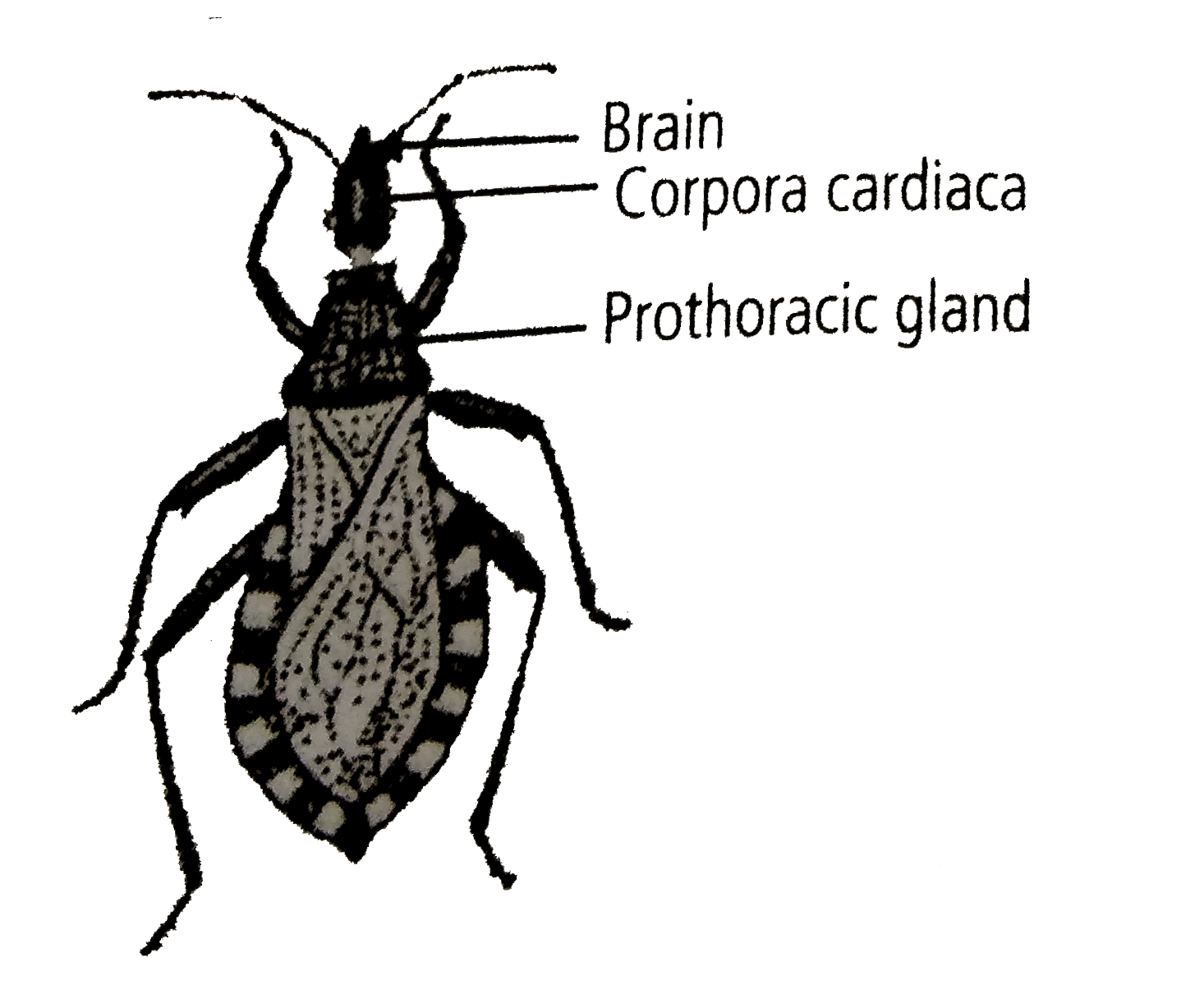If juvenile hormone is absent when silk worm moults, it will
moult into another larval stage
Moult into pupa
mult into adult
die.
The correct Answer is:B
If juvenile hormone is absent when silk worm moults, it will moult into pupa.
Topper's Solved these Questions
- ANIMAL KINGDOMBOOK - A2ZCHAPTER - ANIMAL KINGDOMEXERCISE - Section B : Assertion-reasoning Questions
11 Videos
- ANIMAL KINGDOMBOOK - A2ZCHAPTER - ANIMAL KINGDOMEXERCISE - Section C : Previous Years' Examination Questions (NEET/AIPMT Questions)
80 Videos
- ANIMAL KINGDOMBOOK - A2ZCHAPTER - ANIMAL KINGDOMEXERCISE - Section A : Topicwise Questions Topic 3 : Phylum-platyhelminthes , Aschelminthes , Annelida
16 Videos
- ANATOMY OF FLOWERING PLANTSBOOK - A2ZCHAPTER - ANATOMY OF FLOWERING PLANTSEXERCISE - Section D: Chapter End Test
50 Videos
- BIOLOGICAL CLASSIFICATIONBOOK - A2ZCHAPTER - BIOLOGICAL CLASSIFICATIONEXERCISE - Mock Test Assertion - Reasoning Question
5 Videos
Similar Questions
Knowledge Check
If juvenile hormone is absent when silkworm moults, it will
AMoult into another larval stageBMoult into pupaCMoult into adultDDie.If juvenile hormone is absent when silkworm moults, it will
AMoult into another larvel stageBMoult into pupaCMoult into adultDDieJuvenile hormone causes
AEarly sexual maturityBLate sexual maturityCCompletion of larval stagesDDevelopment of giant larva without ability to undergo maturation
Munga silk worm feeds on
View SolutionSilk is a secretion by silk worm from its special
View SolutionCommercial rearing of silk worms is called:
View SolutionRead the given passage and answer the questions that follows: Rhodinus, a blood-sucking bug, shows five instars before it metamorphoses into an adult. It ahs a very long head with the brain located at tip and an organ called Corpora Cardiaca (C C) behind it. The hormone that ensures the continuum of the juvenile stages is called a juvenile hormone. Behind the head is a pro - thoracic gland, which gets triggered by the Pro - Thoracico - Tropic Hormone (PTTH) to release ecdysone required for molting into an adult.

The following observations were made when the juveniles of this insect were subjected to various conditions :
1. Starved juveniles (any instar) when decapitated → remained juveniles and did not molt into adults.
2. Well-fed juveniles (any instar) when decapitated → molted into adults.
3. Starved juveniles (any instar) when partially decapitated to remove the brain cells → remained juveniles and did not molt into adults.
4. Well - fed juveniles (any instar) when partially deitated to remove the brain cells → did not molt into adults.
If an unfed, completely decapitated, fth (final) instar juvenile is connected to a well-fed, decapitated fourth instar juvenile by a glass tube so that fluids can be exchanged, what whill be the expected result ?
View SolutionRead the given passage and answer the questions that follows: Rhodinus, a blood-sucking bug, shows five instars before it metamorphoses into an adult. It ahs a very long head with the brain located at tip and an organ called Corpora Cardiaca (C C) behind it. The hormone that ensures the continuum of the juvenile stages is called a juvenile hormone. Behind the head is a pro - thoracic gland, which gets triggered by the Pro - Thoracico - Tropic Hormone (PTTH) to release ecdysone required for molting into an adult.

The following observations were made when the juveniles of this insect were subjected to various conditions :
1. Starved juveniles (any instar) when decapitated → remained juveniles and did not molt into adults.
2. Well-fed juveniles (any instar) when decapitated → molted into adults.
3. Starved juveniles (any instar) when partially decapitated to remove the brain cells → remained juveniles and did not molt into adults.
4. Well - fed juveniles (any instar) when partially deitated to remove the brain cells → did not molt into adults.
Which of the following conclusions can be drawn from this data ?
(i) Ecdysone hormone is produced irrespective of the level of feeding.
(ii) C C is the site of production of juvenile hormone.
(iii) PTTH is produced irrespective of the level of feeding.
(iv) Increase in juvenile hormone is an important trigger for production of PTTH.
(v) Absence of C C alone is a trigger for molting into adult form.
(vi) Well-fed larvae in absence of juvenile hotmone can molt into adults.
View Solution
